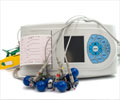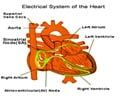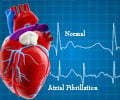Novel electrocardiogram (ECG) method uses signals from the ear to predict heart rhythm, reveals a new study.

‘Ears can be used for electrocardiogram (ECG) to detect atrial fibrillation (AFib), the most common heart rhythm disorder.’
Read More..




This is the first study to show that the ear can be used for ECG signal detection, said researchers at the annual congress of European Heart Rhythm Association 2019 in Lisbon. Read More..
"Mobile ECG devices present a major opportunity to detect atrial fibrillation, the most common heart rhythm disorder, and thereby prevent strokes and reduce hospitalizations," said Raffaele De Lucia, of the University Hospital of Pisa in Italy.
"All available portable ECG devices require both hands, but what if symptoms happen while driving?" De Lucia asked.
The study included 32 consecutive healthy volunteers (cardiology students and nurses). An ECG was first performed by the standard method, which uses the index and middle finger of each hand.
A second ECG was conducted using the index and middle finger of the left hand and a clip attached to the left ear.
Advertisement
"We have shown how the ear can be used as an innovative anatomical site for ECG signal detection in healthy adults. We are now conducting further studies to validate this method in patients with cardiac arrhythmias," De Lucia said.
Besides detecting previously undiagnosed atrial fibrillation, the device would be used to evaluate physical performance during exercise, prevent fainting and check the heart during symptoms including dizziness and breathlessness.
Source-IANS















